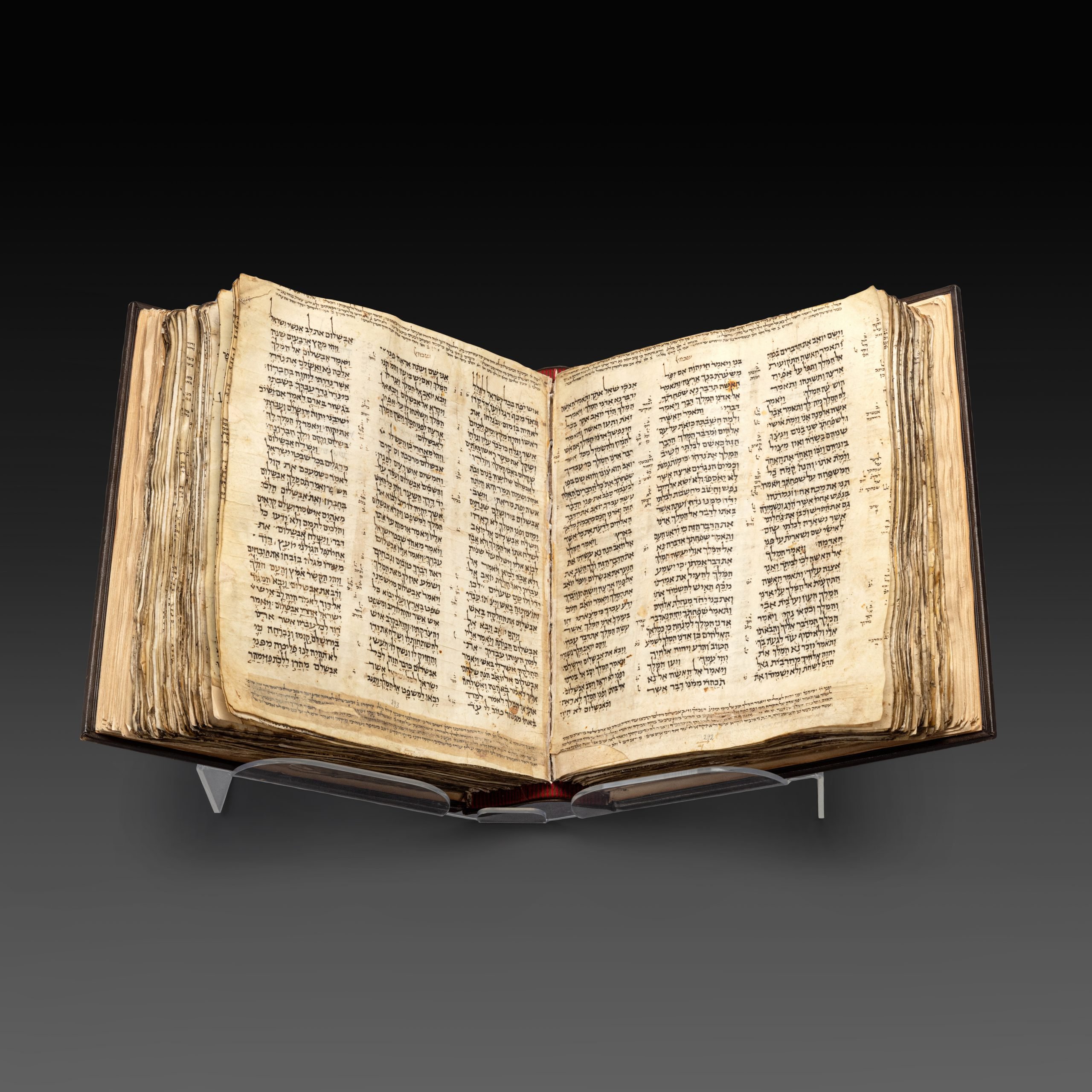
In the context of the 9th century, the biblical text was an expensive undertaking requiring well over 100 animal skins, 400 sheets of parchment, and countless hours of labor as an expert scribe artfully copied out full the Hebrew Bible. In May, one of the oldest and most complete of these texts, the Codex Sassoon, is estimated to fetch between $30 to $50 million when it goes on auction at Sotheby’s.
Reaching the high-end of such an estimate would make it the most valuable historical document ever sold at auction. The lofty price tag is ascribed to its age (around 1,100 years old), its condition (though it’s missing the first 10 chapters of Genesis), and the precedent set by previous historic texts. In 1994, Bill Gates bought a Leonardo da Vinci manuscript for $30.8 million, and Ken Griffin, famously, paid $43.2 million for a first printing of the U.S. Constitution in 2021.
The Codex Sassoon also boasts a captivating story. Copied out by a scribe somewhere in the Levant in the late 9th or early 10th century, it was housed in a synagogue in present-day Syria until the site’s destruction in the 14th century. The Bible then disappeared for 600 years. When it reappeared in Frankfurt in 1929, it was purchased by bibliophile David Solomon Sassoon for £350 (roughly $65,000 today) after whom the text is named. Sassoon claimed it dated to the 10th century, which would have made it among the oldest complete Bibles, and recent carbon-dating by the seller, Jacqui Safra, supports the estimation.
“Now that the Codex has been definitively dated as the earliest, most complete text of its kind, it stands as a critical link from the ancient Hebrew oral tradition to the modern,” Richard Austin, Sotheby’s Global Head of Books & Manuscripts, said in a statement. “The Codex has an incomparable presence and gravitas that can only be borne from more than 1,000 years of history.”
Inside the Codex Sassoon. Photo courtesy of Sotheby’s
The Codex Sassoon comprises 24 books divided into three parts and, unlike Torah scrolls, includes vowel points and accent marks which serve to indicate Hebrew pronunciation and sentence flow. The further presence of annotations, commentary, and ownership records makes the text valuable in studying the linkages between Jewish oral traditions and the modern Hebrew Bible.
The Bible has only been on public display once, at London’s British Museum in 1982, but prior to hitting the auction block in late spring, will be shown in Tel Aviv, Dallas, Los Angeles, and New York.
More Trending Stories:
A Revolutionary Tool Gives Artists a New Weapon in the Fight Against AI Art Theft
Brooklyn-Based Art Collective MSCHF Is at It Again, This Time With Cartoonishly Oversized Red Boots